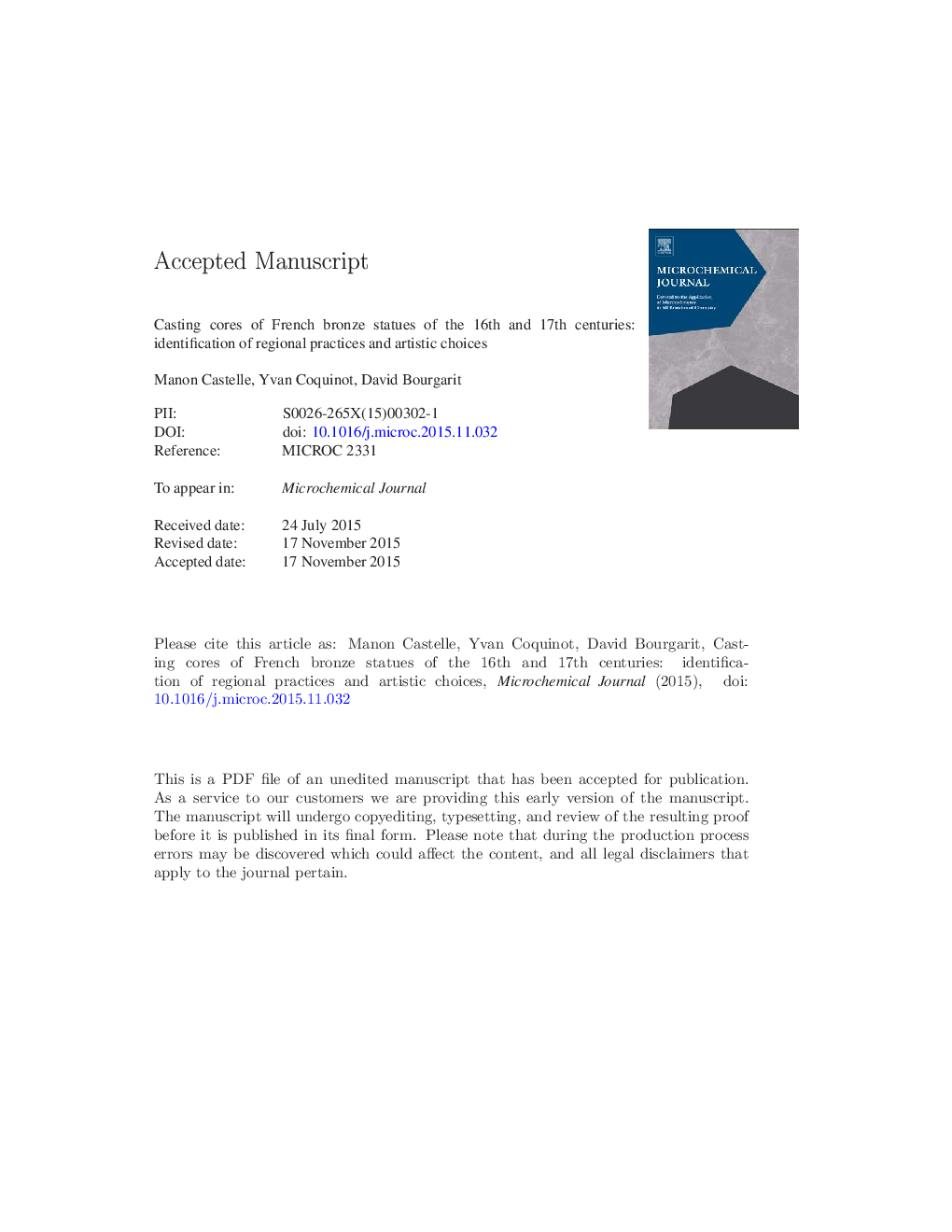| کد مقاله | کد نشریه | سال انتشار | مقاله انگلیسی | نسخه تمام متن |
|---|---|---|---|---|
| 7641451 | 1494868 | 2016 | 30 صفحه PDF | دانلود رایگان |
عنوان انگلیسی مقاله ISI
Casting cores of French bronze statues of the 16th and 17th centuries: Identification of regional practices and artistic choices
ترجمه فارسی عنوان
پایه های ریخته گری مجسمه های برنزی فرانسوی قرن های 16 و 17: شناسایی شیوه های منطقه ای و انتخاب های هنری
دانلود مقاله + سفارش ترجمه
دانلود مقاله ISI انگلیسی
رایگان برای ایرانیان
موضوعات مرتبط
مهندسی و علوم پایه
شیمی
شیمی آنالیزی یا شیمی تجزیه
چکیده انگلیسی
What can the chemical and petrofabric study of casting cores of early modern large bronzes tell us about the practices of sculptors and foundry men? The technical study of 23 major large French bronzes dated from the 16th and 17th centuries provides some answers. These include three prestigious royal commissions, namely two of the six bronzes copied by Primaticcio from the marble models of the Belvedere for Francis I, two of the six statues from the funeral monument of Henry II and Catherine de Medicis, and the three bronzes from the heart monument of Constable Anne de Montmorency. Among the investigations carried out (alloy composition, X-ray radiography, and so on) [1], the chemical and petrographic analysis of the refractory cores sampled from inside the statues has proved to be crucial. Surprisingly, this approach is far from systematically applied in the field, despite some successful results [2] including the pioneering work of C. Reedy [3]. This paper introduces the new methodology of casting core analysis developed at the C2RMF. Results obtained from a large corpus of French bronze statues will be described, illustrating the complementary role of core analysis alongside the informative potential of metal analysis and the characterization of casting technique through multivariate technological studies. During the 16th and 17th centuries in France, casting cores were generally created from a sandy clay material with a variable addition of organic. The results of the study cast light on two aspects of the nature of the cores. On the one hand, the bulk chemical compositions of cores and mineralogical composition of added sand show a relatively good homogeneity within the region of Paris and its surroundings, thus testifying to a similar provenance of raw materials. Conversely, significant variations were evident in compositions from other regions. Consequently, the casting cores constitute an excellent regional marker. On the other hand, significant variations were observed in the size distributions of aplastic inclusions, thus witnessing local foundry know-how through the use of several sandy-clayey mixtures.
ناشر
Database: Elsevier - ScienceDirect (ساینس دایرکت)
Journal: Microchemical Journal - Volume 126, May 2016, Pages 121-131
Journal: Microchemical Journal - Volume 126, May 2016, Pages 121-131
نویسندگان
Manon Castelle, Yvan Coquinot, David Bourgarit,
